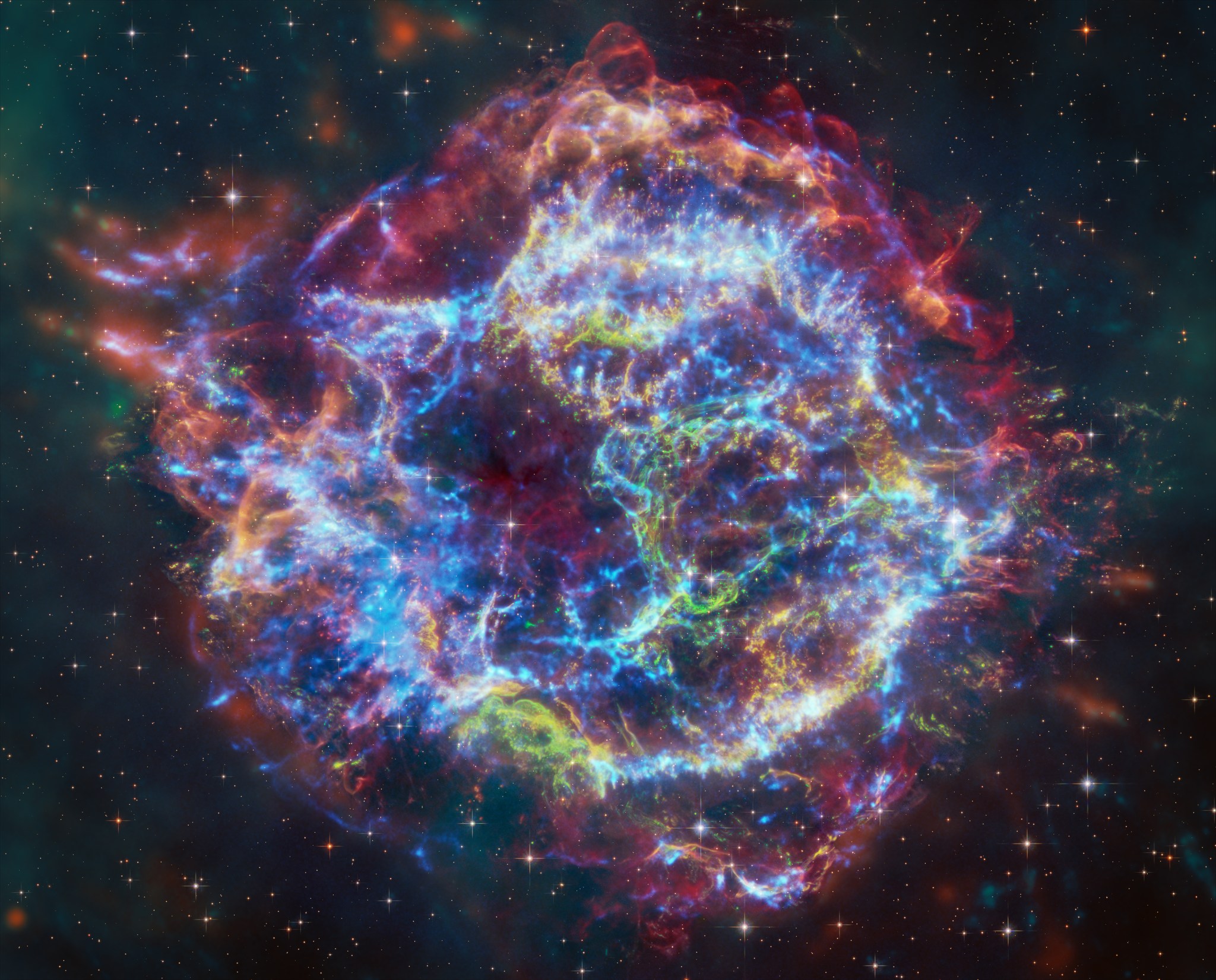
For the first time, astronomers have combined data from NASA’s Chandra X-ray Observatory and James Webb Space Telescope to study the well-known supernova remnant Cassiopeia A (Cas A). This work has helped explain an unusual structure in the debris from the destroyed star called the “Green Monster,” because of its resemblance to the wall in the left field of Fenway Park.
By combining the Webb data with X-rays from Chandra, researchers have concluded that the Green Monster was created by a blast wave from the exploded star slamming into material surrounding it. Detailed analysis found that filaments in the outer part of Cas A, from the blast wave, closely matched the X-ray properties of the Green Monster, including less iron and silicon than in the supernova debris. This interpretation is apparent from the color Chandra image, which shows that the colors inside the Green Monster’s outline best match with the colors of the blast wave rather than the debris with iron and silicon.
Learn more about the Green Monster.
from NASA https://ift.tt/obumEIF
